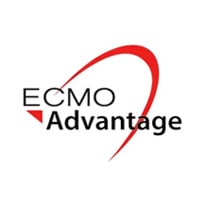Some ECMO centers created a “two career” model, providing two RNs at an ECMO patient’s bedside. One RN as the ECMO specialist, focusing on the operation of the ECMO pump, and the other attending to other ICU RN roles. Author Kathleen JR Daly notes that the advantage of having a nurse as an ECMO specialist is that they are able “to provide 24-hour care, managing all aspects of patients' needs, including administration of medication, and to have the technical skills and knowledge to safely manage the ECMO circuit with perfusion backup for the more complicated aspects of circuit management.”
Vanessa Moll, et al, wrote that the success of an ECMO program relies on these elements:
- Institutional commitment
- Key personnel with continuous involvement in ECMO management
- A physician leader with hospital supported time to develop the program
- A formal consultative service to evaluate ECMO candidates
Cost Savings
Hospitals today are under enormous financial pressure and constraints. Financially supporting an ECMO program is a complex task. Today’s perfusionists earn roughly a six-figure salary, occupying a large percentage of a program’s funding. Facilities with ECMO programs remain in similar situations. To off set this cost, programs are utilizing RNs as the primary bedside caregivers monitors for cardiovascular ECMO patients, Thomas Jefferson University’s Department of Surgery saw a cost savings of 61%.
RNs are RRTs are uniquely positioned to be part of the ECMO core team because their formal education incorporates aspects such as acid-base balance, oxygen delivery, cardiopulmonary anatomy as well as cardiopulmonary pathology and physiology. These fundamentals provide ideal understanding for operating the ECMO circuit. By incorporating nursing and respiratory therapy into the ECMO team, programs can reduce expenditures as well as maintain perfusion staffing within the operating room.
A Modified ECMO Staffing Model Example: Emory University Hospital
Atlanta’s Emory University Hospital (EUH) is a large established health system providing state of the art care throughout the region. The hospital provides emergent ECMO support for any clinical situation that may arise. Previously, perfusionists operated the ECMO circuit and were required to be present at the bedside 24 hours a day. This created an enormous amount of stress on the entire perfusion department.
Moll et al, wrote that because of the stress on EUH’s system, the cardiac operating room cases were frequently canceled due to the lack of perfusion support. As well as, “significant dissatisfaction among the cardiac surgeons, patients, hospital administration, and perfusionists.”
In order to improve outcomes, EUH and the Emory Critical Care Center (ECCC) developed a hybrid ECMO staffing program between respiratory therapy and perfusion.


